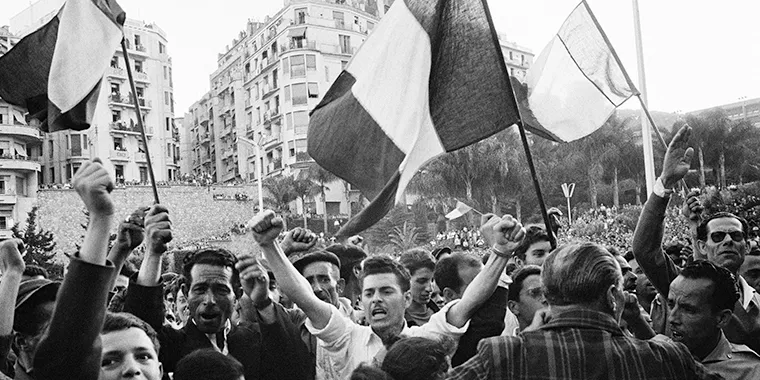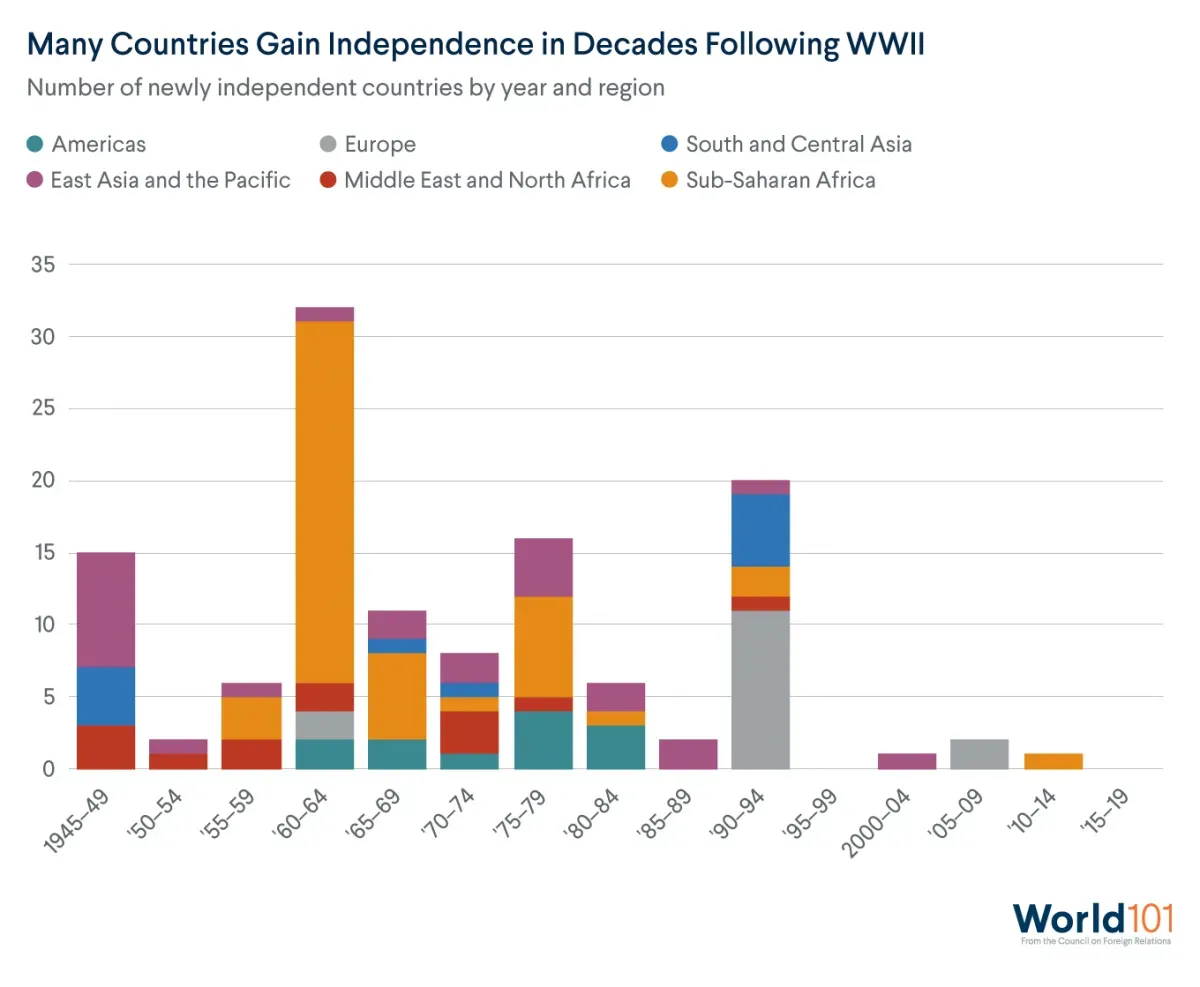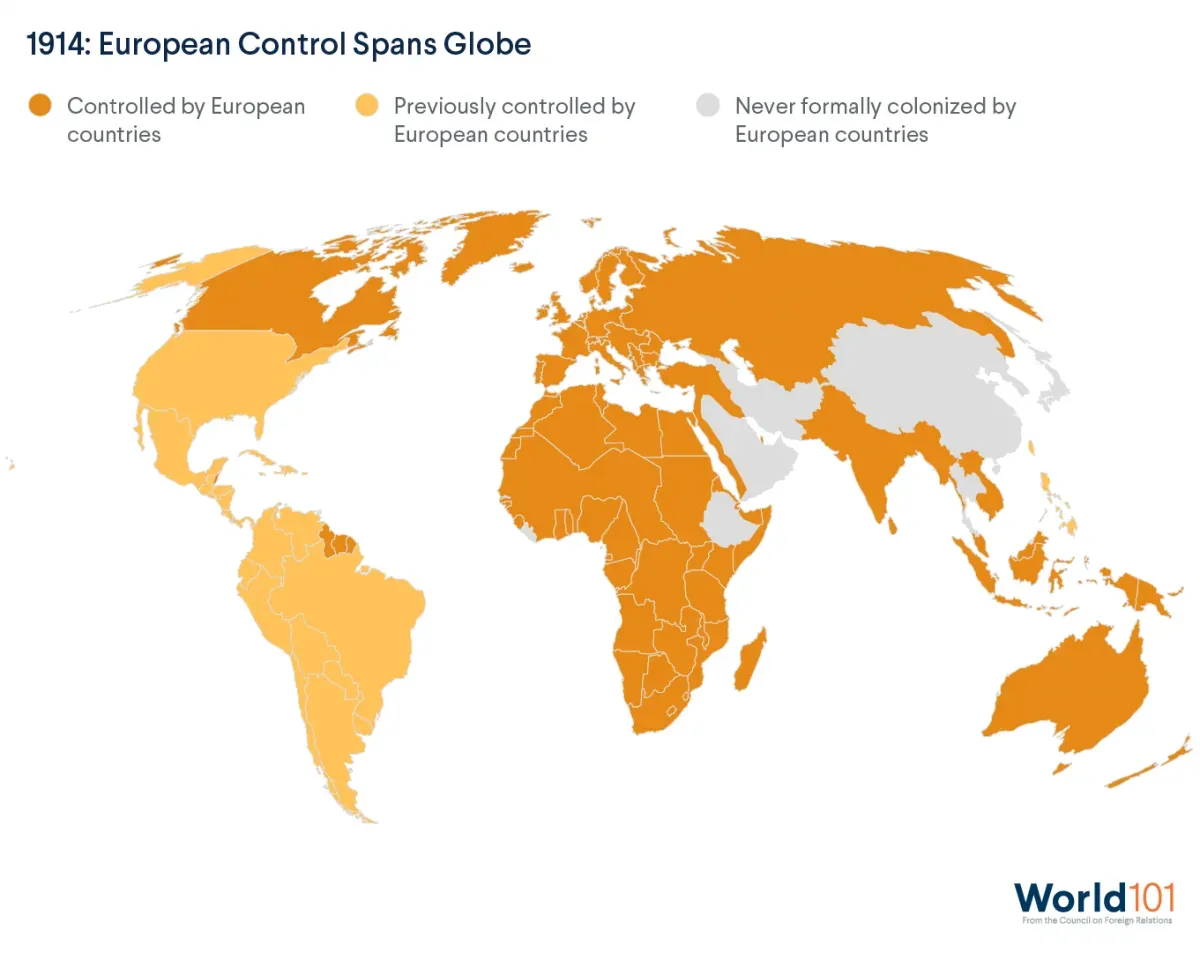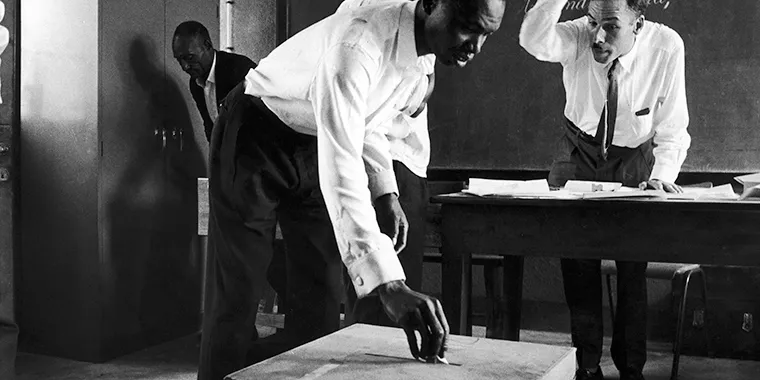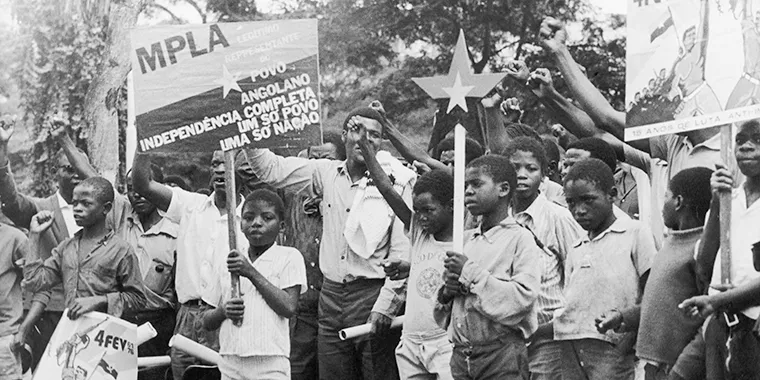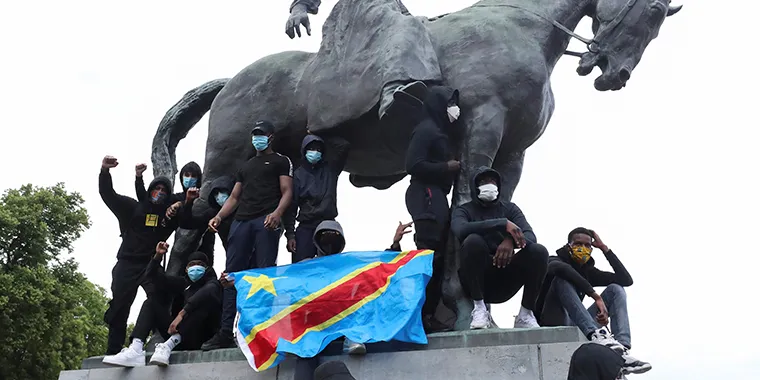How Did Decolonization Reshape the World?
Learn about the challenges former colonies faced in building newly independent countries.
Imagine this: A revolutionary leader stands above a large crowd to declare his nation’s independence. He proclaims, “All men are created equal. They are endowed by their creator with certain inalienable rights; among them are life, liberty, and the pursuit of happiness.”
Did you think of the American colonies in 1776? Maybe you pictured George Washington or Thomas Jefferson on the streets of Philadelphia.
How about Vietnam? In 1945, more than 150 years after the U.S. Declaration of Independence, Vietnamese revolutionary Ho Chi Minh invoked those same words when declaring his country free from French colonial rule.
Ho articulated many of the same goals as the United States’ founding fathers. And he was hardly alone. In the years following World War II, dozens of countries gained their independence. These independence movements brought an end to an age of colonialism in which mostly European empires ruled nearly a third of the world’s population.
This period of revolutionary fervor— known as the era of decolonization—fundamentally reshaped the world. Millions of formerly disenfranchised people voted for the very first time. Moreover, new postcolonial leaders brought attention to historically neglected global issues such as economic inequality and foreign military intervention.
But for those former colonies that gained their independence, establishing a country entailed far more than simply flying a new flag or playing a national anthem. The process of breaking away from colonial rule often entailed years of violence or protest. And even after independence, leaders faced the challenge of building governments that would support their citizens for future generations. Today, we continue to see the legacy of their independence movements. Decolonization movements not only changed the borders of the world map but also the politics, economics, languages, cultures, and demographics of countries worldwide.
This resource explores how countries gained their independence and the obstacles leaders faced in building their new nations. The resource will also address the ways the world continues to experience the legacy of decolonization.
Why did the age of colonialism come to an end?
For hundreds of years, competing, mainly European empires controlled countries or areas around the world and exploited indigenous peoples and resources in territory they ruled. This practice, known as colonialism, provided imperial powers with a clear path to increase their wealth, power, and influence. Colonies granted global powers access to raw materials such as sugar and tobacco, a new base of potential customers for their leading exports, and the opportunity to convert hundreds of millions of people to Christianity.
Colonialism was both pervasive and persistent. European empires, for example, conquered more than 80 percent of the world between 1492 and 1914. The gradual independence of many colonies in the Americas during the eighteenth and nineteenth centuries provided large populations with self-governance for the first time. However, the United States, Europe, and Japan still controlled large parts of Africa, Asia, the Caribbean, the Middle East, and the Pacific around the end of World War II.
For generations, colonized people called for independence to little avail. But at the end of World War I, many of these groups had reason for optimism. In 1918, U.S. President Woodrow Wilson delivered a speech on the importance of self-determination—the idea that people should be governed only with their consent. Pro-independence revolutionaries from places such as Egypt, Korea, and Vietnam celebrated the announcement and reached out to Wilson for further support of their causes. Ultimately, however, Wilson largely ignored these appeals.
So after centuries of colonialism, what finally prompted the breakup of these powerful, continent-spanning empires following World War II? Let’s explore a few causes.
Economic Forces: World War II bankrupted much of Europe. As a result, the cost of maintaining thousands of soldiers and administrators in colonies halfway around the world became increasingly unfeasible. In particular, the United Kingdom struggled to maintain its empire due to crippling war debt following the conflict.
Postwar Agreements: Several countries on the losing side of World War II forfeited their colonies as terms of their surrender. For instance, Japan—which ruled over two hundred million people across thirteen modern-day countries—renounced control of its empire in a 1951 peace treaty.
Independence Movements: Long-standing independence movements placed increased pressure on colonial powers following World War II. In colonies such as Ghana and India, political groups spearheaded widely popular nonviolent protests. Meanwhile, in places like Kenya and Vietnam, rebel groups fought prolonged wars to gain their independence.
International Pressure: The founding of the United Nations in 1945 gave newly independent countries a forum to raise global support for decolonization around the world. In 1960, a bloc of African and Asian nations organized a resolution calling for the “complete independence and freedom” of all colonial territories. The resolution passed without opposition, signaling a global denunciation of colonialism.
Independence Movements
Click through each case study to learn more about it.
How did former colonies build their nations?
After achieving independence, postcolonial leaders began the difficult work of setting up new governments. They faced huge decisions: How should their governments be organized? Who would be in charge? And which policies would best ensure safety and stability while propelling economic growth?
Let's explore the different ways new nations responded to such challenges.
Political Challenges: Many countries emerged from colonialism with little political experience. The Democratic Republic of the Congo, for instance, had never held an election prior to independence. Other countries, like Guinea, lacked trained personnel or even physical infrastructure; when France ceded the West African colony in 1958, its government recalled more than four thousand citizens—many of whom worked as judges, teachers, and doctors—and instructed them to destroy everything they could before leaving. As a result, the new Guinean administration came into office with public buildings in ruins. Meanwhile, government workers did not receive meaningful training from French officials who had ruled the country for over six decades.
New administrations also faced the legacy of colonial borders. Imperial powers drew territorial boundaries with little regard for national, political, or economic realities on the ground. As a result, when decolonization occurred, countries were often rife with internal division. So how did former colonies create competent, stable, and representative governments?
So how did former colonies approach the task of creating competent, stable, and representative governments?
Postcolonial leaders employed various strategies. India’s first prime minister, Jawaharlal Nehru, requested the former British colonial ruler, Lord Mountbatten, stay on to aid the new administration. South Korean policymakers took inspiration from the U.S. Constitution in structuring their new government. Indonesia—a sprawling southeast Asian archipelago comprising roughly 6,000 inhabited islands in which more than 260 million citizens speak over 700 languages— faced unique challenges during its nation-building period. To contend with the territory’s sprawling footprint and diverse demographics, the country’s founding father, Sukarno, attempted to unite the country through a national identity based on ideas rather than geography, language, religion, or ethnicity.
However, some countries struggled to promote inclusive postcolonial governance. In Cambodia and Madagascar, the promise of democracy faded as dictators seized power amid unrest. Meanwhile, in Rwanda and Sudan, tensions between ethnic groups grew after independence. These instances of hostility escalated from discrimination, to violence, and eventually genocide (actions taken with the intent to destroy a specific group of people).
Local leaders did not always share the same vision for their societies, which often fueled conflict. For example, Indian independence leader Mahatma Gandhi supported the creation of a unified India free of British rule. Meanwhile, Muhammad Ali Jinnah pushed for the formation of two separate countries: Hindu-majority India and Muslim-majority Pakistan. Ultimately, the British accepted Jinnah’s proposal and divided the subcontinent. This policy led to a traumatic period of mass displacement and violence known as Partition. Similarly, as Britain withdrew from Palestine in 1948, it left behind separate Jewish and Arab countries per a UN partition plan. Jewish leaders celebrated the announcement and declared Israel’s independence. Arabs, however, rejected the UN plan, which—in their view—seized their ancestral lands. War followed, causing hundreds of thousands of Palestinians to flee their homes. The ensuing conflict resulted in even further loss of land for Palestinians.
Economic Challenges: Many empires set up their colonies exclusively to export a small handful of raw materials like cotton, iron, and petroleum. This lack of economic diversification presented challenges for newly independent countries. Postcolonial economies were often thrown into crisis when demand for their primary exports fell. Mali’s economy, for example, collapsed in 1973 when the price of oil skyrocketed, making it far more difficult to export its two main goods—gold and cotton—which relied on oil-fueled machinery.
Some former colonies like South Korea and Taiwan shifted from exporting raw materials to instead producing various industrial goods such as ships and computers. This transition, also known as industrialization, allowed the two economies to soar given the high demand and high prices for such goods. As a result, people in South Korea and Taiwan today enjoy, on average, higher incomes—and, consequently, better government services—than those in many economically volatile countries.
Industrialization, however, is a difficult and expensive endeavor that requires investment in factories and energy sources. South Korea and Taiwan carried out their transformation with economic support from the United States and generous access to the U.S. market for their exports. Many other countries have turned to the World Bank and the International Monetary Fund—or, more recently, to China—for such funding.
Without diverse exports or industrialized societies, many newly independent countries experienced difficulty keeping up in the hyper-competitive global economy. As such, postcolonial leaders like Kwame Nkrumah, Ghana’s first prime minister, looked toward innovative solutions. Nkrumah believed that a united Africa was the continent’s only chance to compete with powerful European economies. He proposed creating a system similar to the United States of America. Under this governing framework, a central authority would collect taxes, coordinate foreign policy, promote economic cooperation, and manage an all-African army. Ghana, Guinea, and Mali were early adopters of the idea of a “United States of Africa.” These nations were so committed to an African central authority that they tailored their constitutions to allow their governments to cede partial or total control of their domestic affairs. Nkrumah ultimately founded the Organization of African Unity—a forerunner to today’s African Union.
Cold War Challenges: Decolonization did not occur in a vacuum. As World War II faded into the Cold War, the United States and the Soviet Union intervened around the world. These rival nations hoped to win the support of newly independent countries. The two global superpowers backed protest movements, funded aid packages, and provided military support in advance of their respective capitalist and communist goals. The United States even endorsed the assassination of politicians suspected of supporting communism. For example, the CIA played a role in the killing of Patrice Lumumba, the Congo’s first prime minister.
In certain instances, the United States and the Soviet Union supported opposing factions in postcolonial civil wars. Take Vietnam, for example. After a nine-year war of independence against France, Vietnam split into two countries: a Chinese- and Soviet-backed north and a U.S.-backed south. When North Vietnam invaded the south in 1955, the United States, China, and Russia ratcheted up their support for the two sides. These foreign supporters sent financial aid, weapons, and soldiers, fueling a devastating, two-decade conflict. More than two million Vietnamese civilians are estimated to have died in the war, which resulted in communist control over a unified country.
This type of conflict—in which the United States and the Soviet Union supported opposing sides in foreign countries—is known as proxy war. And Vietnam was hardly the only battlefield. Throughout the Cold War, the two superpowers waged proxy wars in countries such as Afghanistan, Angola, El Salvador, Guatemala, Korea, and Nicaragua.
Ties between the Cold War superpowers and former colonies have persisted to this day. For example, Syria—which gained support from the Soviet Union during its fight for independence—continues to receive critical aid and assistance from Moscow amid an ongoing, decade-long civil war. Likewise, South Korea has received American protection since the two countries signed a mutual defense treaty at the beginning of the Cold War.
Is decolonization over?
The world map fundamentally changed during the era of decolonization. Roughly a hundred countries came into existence between 1945 and 1989. Today, the vast majority of people live in independent countries, but that doesn’t mean that decolonization is entirely over.
Nearly two million people still live in what the United Nations calls non-self-governing territories. Moreover, many residents in those territories have persistently pushed for a change in their status. In the U.S.-administered territory of Guam, some popular movements have called for independence from Washington. Meanwhile other Guamanians hold hope the Pacific island becomes the fifty-first state of the United States.
And even in independent countries, the legacy of colonialism and decolonization remains visible. Most former colonies adhere to their colonial-era borders. Many of these countries still use their former colonizers’ languages; twenty-one African nations list French as an official language and twenty-one list English.
However, many countries see decolonization as an ongoing process. The shedding of imperial influence is not geared just towards achieving independence but also toward removing all vestiges of colonialism. In Cameroon and Nigeria, political movements have pushed to reorganize the countries along ethnic lines rather than colonial borders. In Tanzania, the government replaced English with Kiswahili—an indigenous African language—for instruction in schools. And in countries like Benin, India, and Mali, governments have demanded the repatriation (or returning) of artifacts and jewelry stolen during colonization.
Today, debates persist over the lasting effects of colonialism and decolonization. Specifically, experts struggle to agree on why some countries like Singapore and Taiwan have developed stable democracies and strong economies while others like Chad and North Korea have experienced decades of authoritarianism and underdevelopment. Certain theories attribute this divergence to factors such as geography, access to natural resources, and the varying ways empires governed their colonies. Others argue that decisions made by postcolonial leaders hold greater bearing on today’s political and economic outcomes. In reality, these histories are complex with no two experiences exactly identical; likely some combination of these factors accounts for today’s postcolonial dynamics.
However, one thing remains important to remember: decolonization is a relatively recent phenomenon. In fact, colonialism only ended around sixty years ago for the majority of the world’s countries. Think about how much the United States has changed since 1836, the sixtieth anniversary of its own independence. At that time, the country only had twenty-five states—in many of which slavery was legal—and less than 5 percent of its present-day population.
Power dynamics change over time. Who knows where former colonies will be in another sixty years?
